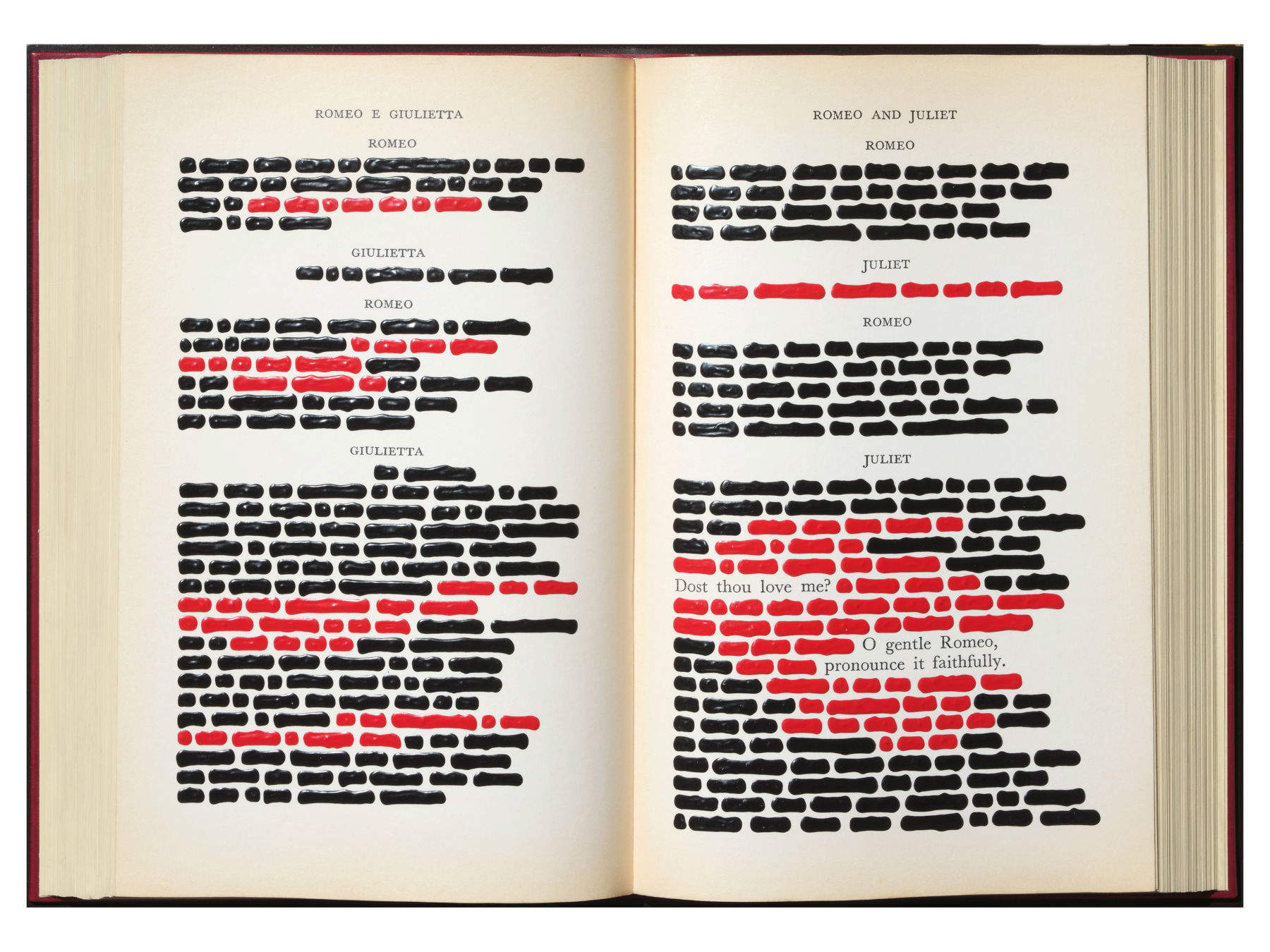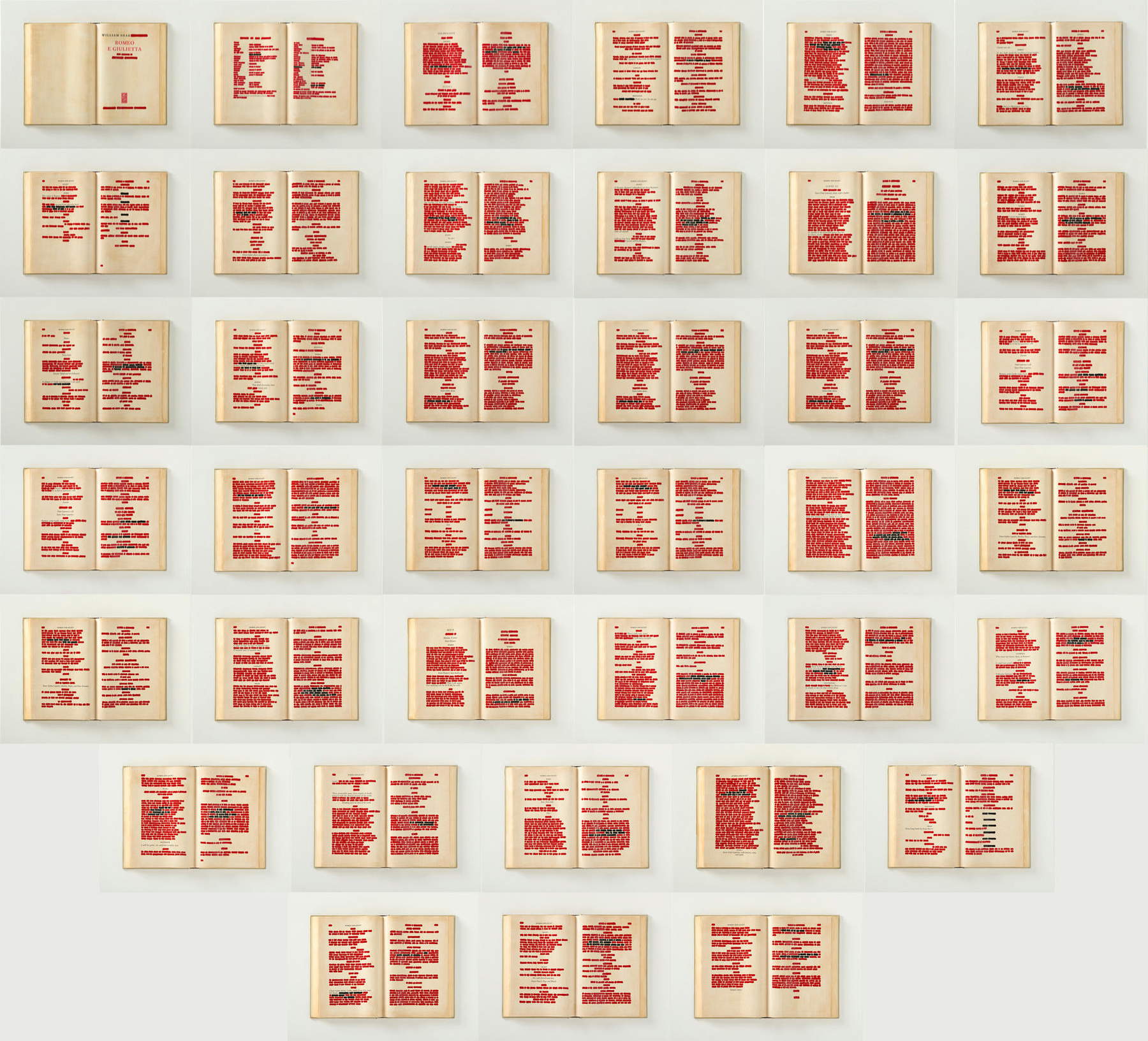On Wednesday, November 5, 2025 Tornabuoni Arte Roma in Rome will open Emilio Isgrò. Red Shakespeare, an exhibition that can be visited until Feb. 14, 2026 and is designed to bring into dialogue the writings and visual works of the Sicilian artist, born in Barcelona di Sicilia in 1937. The exhibition project proposes an itinerary in which writing constitutes the starting point and connection between Isgrò’s literary and visual production , confirming how his activity as a poet and writer is just as important as his artistic one.
Isgrò’s first poetic publications date from 1956, and had immediate critical attention, as evidenced by Pasolini’s article La Poesia e il Sud that appeared in Il Punto on May 25, 1957. The artist maintained close relations with figures in Italian literature, including Montale, who reacted with disappointment to a statement by Isgrò in 1966, “The word is dead.” His literary output includes collections of poems published by Vittorini and Calvino in Einaudi’s Menabò and novels published by Feltrinelli, Mondadori, and Sellerio. Among them, L’avventurosa vita di Emilio Isgrò, recently reissued by Interlinea, was nominated for the Strega Prize. Parallel to writing, Isgrò has been active in journalism. He collaborated with Il Gazzettino di Venezia, handling the revision and editing of texts such as those of Giovanni Comisso. It was while revising one of these articles, deleting parts considered superfluous, that the idea of exploring erasure as an expressive and poetic tool was born. He was later editor of Oggi under the editorship of Enzo Biagi, and in recent years has contributed to Corriere della Sera and La Lettura.


His theatrical experience is linked to Gibellina, a Sicilian town rebuilt after the 1968 earthquake. Mayor Ludovico Corrao commissioned Isgrò to create a work inspired by Aeschylus’Oresteia. The theatrical trilogy The Oresteia of Gibellina was staged in the ruins of the city between 1983 and 1985, confirming the link between words and places. Even in the visual activity, the word remains a central element: its erasure, a recurring presence, becomes a metaphor for the essential, transposing written language into artistic form.
The exhibition is structured as a confrontation between writing and images. Theatrical texts, poetry collections and novels are displayed alongside visual works inspired by literary subjects or the writing itself. The most representative works include works from the 1970s such as Vitale (1972), followed by Odysséus (2018), dedicated to the Odyssey, and Ala italiana, Corriere (2013), based on the front page of Corriere della Sera. The last two rooms are entirely dedicated to WilliamShakespeare. Here the red erasure, a technique that characterizes Isgrò’s recent production, reaches a monumental dimension in Romeo and Juliet (2022) and Othello (2019), composed of 38 and 36 volumes, respectively. In these works, the red color of the erasure defines a visual dialogue with the word, marking the boundary between text and image. The exhibition will remain open until Feb. 14, 2026, offering an integrated reading of Isgrò’s work, in which literature, journalism, theater and visual art coexist seamlessly. The opening is scheduled for Nov. 5, 2025, from 5 to 7:30 p.m. at Tornabuoni Arte’s Rome headquarters, Via Bocca di Leone 88.
 |
| Emilio Isgrò in Rome, between word and image in Tornabuoni Arte exhibition |
Warning: the translation into English of the original Italian article was created using automatic tools. We undertake to review all articles, but we do not guarantee the total absence of inaccuracies in the translation due to the program. You can find the original by clicking on the ITA button. If you find any mistake,please contact us.